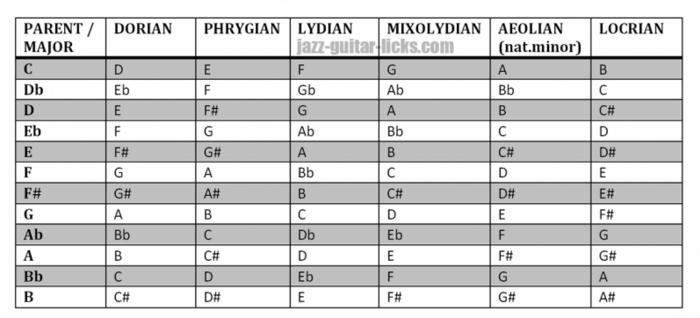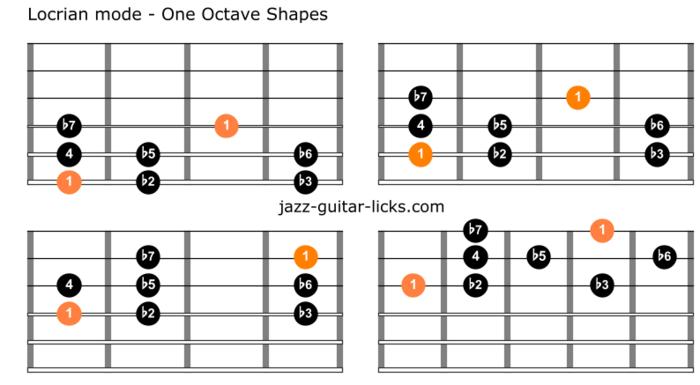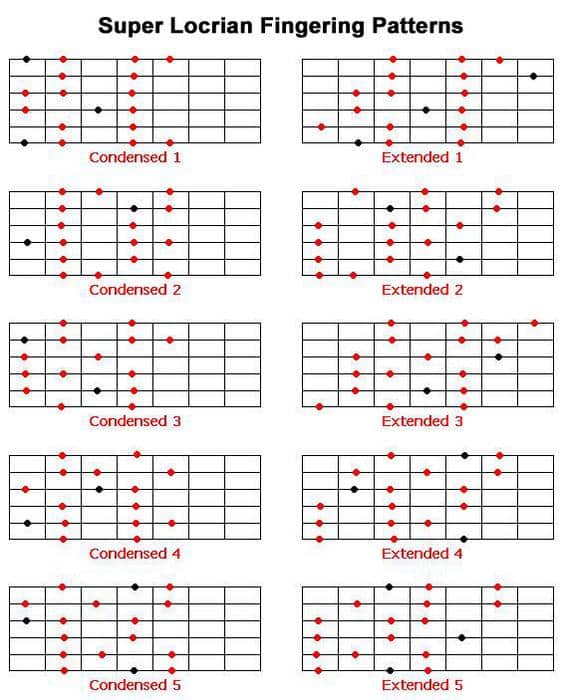As I stood on stage, my fingers poised over the fretboard, I could feel the audience’s anticipation. They were expecting another run-of-the-mill metal solo, but I had something different in mind. With a deep breath, I launched into a blistering Locrian scale run that left jaws hanging. The haunting dissonance filled the venue, transforming the entire atmosphere. That night, I discovered the true power of the Locrian scale on guitar.
As a master’s degree holder in Contemporary Improvisation from the New England Conservatory of Music, I’ve always been fascinated by the Locrian scale’s unique tonal qualities. Often overlooked and misunderstood, this scale holds the key to unlocking new dimensions in your playing. In this comprehensive guide, I’ll share my insights on mastering the Locrian scale, from its theoretical foundations to practical applications that will elevate your guitar work. Get ready to explore the dark, enigmatic world of Locrian and revolutionize your musical palette.
Understanding the Locrian Scale
Locrian Scale Theory

In my experience teaching Locrian scale theory, I’ve found it to be a fascinating yet often misunderstood concept. The Locrian scale, with its unique structure, is the seventh mode of the major scale. It’s the darkest and most unstable of all the modes, which is precisely what makes it so intriguing. As I’ve explained in my instructional books, understanding the theoretical underpinnings of the Locrian scale is crucial for grasping its practical applications. The scale’s distinctive half-step between the root and second note, coupled with its diminished fifth, creates a sense of tension that’s unparalleled in other modes. This tension is what gives the Locrian scale its characteristic sound, making it a powerful tool for creating atmospheric and edgy compositions, particularly in genres like metal and avant-garde jazz.
Throughout my career writing for guitar magazines, I’ve emphasized how Locrian scale theory isn’t just academic knowledge—it’s a gateway to expanding your musical vocabulary. By understanding the scale’s construction and its relationship to other modes, guitarists can unlock new realms of expression. The theory behind the Locrian scale also illuminates its role in harmonic contexts, particularly its natural affinity for half-diminished chords. As we delve deeper into the practical applications of the Locrian scale, remember that this theoretical foundation is what will enable you to use the scale creatively and effectively in your playing.
Relationship to Other Scales

In my years of analyzing and transcribing music, I’ve come to appreciate how the Locrian scale intertwines with other scales and modes. It’s the seventh mode of the major scale, sharing a unique relationship with its parent. Understanding this connection is crucial for guitarists aiming to master the Locrian sound. The Locrian mode begins on the seventh degree of the major scale, creating its distinctive diminished fifth interval. This relationship extends to other modes too; for instance, the Phrygian mode is just a half step away from Locrian, offering interesting possibilities for modal interchange. My work with various artists has shown me how these relationships can be exploited creatively. By grasping these connections, you’ll not only understand Locrian better but also enhance your overall modal vocabulary, opening up new avenues for composition and improvisation.
Playing the Locrian Scale on Guitar
Locrian Scale Patterns

As we delve deeper into playing the Locrian scale on guitar, let’s explore some essential Locrian scale patterns. In my book ‘Color Your Chords’, I emphasize the importance of visualizing patterns on the fretboard. I’ll share some of my favorite Locrian scale patterns that I’ve developed through years of playing and teaching. These patterns are crucial for efficient fingerboard navigation and developing muscle memory.
One pattern I find particularly useful starts on the sixth string and ascends diagonally across the fretboard. This pattern helps guitarists internalize the unique intervals of the Locrian scale while covering a wide range. Another pattern I often teach focuses on a three-notes-per-string approach, which is excellent for building speed and fluidity. By mastering these patterns, you’ll find yourself more comfortable improvising and creating melodies in the Locrian mode, setting the stage for more advanced applications in your playing.
Fingerboard Navigation

As a transcriber, I’ve encountered the Locrian scale fingerboard patterns countless times, and I’ve developed some effective strategies for navigating them. The key is to visualize the scale as interconnected shapes across the neck, rather than isolated positions. I start by identifying the characteristic half-step between the root and the second degree, which serves as an anchor point. From there, I mentally map out the remaining intervals, focusing on the tritone and minor third relationships that define the Locrian sound.
To make this scale feel natural under your fingers, I recommend practicing it in various positions, starting from different strings. This approach helps you internalize the unique fingerboard layout of the Locrian scale. Additionally, I’ve found that relating Locrian patterns to more familiar scales, like the natural minor, can provide useful reference points. Remember, mastering Locrian navigation is about developing a holistic understanding of the fingerboard, enabling you to express this haunting scale fluently in any musical context.
Practical Applications of the Locrian Scale
Using Locrian in Metal Music

Throughout my career with Premier Guitar, I’ve had the privilege of dissecting the techniques of countless metal guitarists. The Locrian scale for metal stands out as a powerful tool for crafting intense, dissonant soundscapes. Its unique tonal structure, with a flattened fifth, lends itself perfectly to the dark, heavy atmosphere that defines the genre. I’ve observed how guitarists leverage the Locrian scale to create haunting melodies and crushing riffs that resonate with metal’s raw energy.
In my experience, the Locrian scale’s ability to generate tension is unparalleled. When incorporated into solos, it can produce a sense of unease that perfectly complements the aggressive nature of metal music. By mastering this scale, you’re not just learning notes; you’re unlocking a gateway to a whole new realm of musical expression within the metal genre.
Locrian Scale in Chord Progressions

As a contemporary improvisation specialist, I’ve found that incorporating the Locrian scale into chord progressions can yield some truly captivating results. The Locrian scale chords offer a unique palette of harmonies that can add tension and intrigue to your compositions. By strategically using these chords, you can create a sense of unresolved suspense that keeps listeners engaged. I often start by introducing the characteristic half-diminished chord built on the root of the Locrian scale, then explore the interplay between this and other chords derived from the scale. This approach can transform mundane progressions into something extraordinary, especially when used as a transitional device or to underscore particularly dramatic moments in a piece. The key is to balance the Locrian’s inherent instability with more conventional harmonies, creating a dynamic tension that can elevate your chord work to new heights of expressiveness.
Exercises and Practice Techniques
Locrian Scale Arpeggios

When it comes to mastering the Locrian scale, incorporating arpeggios is crucial. In my experience, Locrian scale arpeggios offer a unique way to internalize the scale’s distinctive sound and structure. I’ve found that practicing these arpeggios not only improves technical proficiency but also enhances harmonic understanding. By breaking down the scale into its constituent chord tones, we can create fluid, musical lines that capture the essence of the Locrian mode.
I often encourage my students to start with simple triad arpeggios, then gradually expand to seventh and extended chord arpeggios. This approach allows for a systematic exploration of the scale’s harmonic possibilities. As you become more comfortable, try combining scale runs with arpeggio patterns. This technique, which I’ve used extensively in my own playing, can lead to more sophisticated and expressive improvisation. Remember, the goal is not just to play notes, but to craft meaningful musical statements that leverage the unique character of the Locrian scale.
Locrian Mode Examples

As an engraver, I’ve notated countless musical examples, and I’m excited to share some Locrian mode examples that I’ve crafted specifically for guitar players. These examples are designed to help you internalize the scale in various musical contexts. I’ll start with simple melodic patterns that emphasize the characteristic intervals of the Locrian mode, such as the minor second and diminished fifth. Then, we’ll progress to more complex phrases that incorporate chord tones and passing notes, demonstrating how to navigate the Locrian sound effectively.
I’ve also included examples that showcase the Locrian mode in different genres, from metal riffs to jazz fusion licks. By practicing these diverse musical scenarios, you’ll develop a deeper understanding of how to apply the Locrian scale creatively in your own playing. Remember, the key is to listen critically as you play, focusing on the unique tension and resolution patterns that the Locrian mode offers.
When and Where to Use the Locrian Scale

As a seasoned guitarist and editor of ‘Acoustic Guitar’ magazine, I’ve encountered countless scenarios where the Locrian scale can truly shine. Imagine having a musical superpower that you can unleash at just the right moment. That’s the Locrian scale when used strategically. Let’s explore when and where to wield this powerful tool. In my experience, the Locrian scale is particularly effective in creating tension and darkness in your music.
I’ve found that the Locrian scale is most impactful in metal and progressive rock genres. When you’re looking to add an edgy, dissonant flavor to your solos or riffs, the Locrian scale is your go-to choice. It’s especially potent when playing over diminished chords or in passages where you want to evoke a sense of unease or anticipation. In my Locrian scale guitar lessons, I often emphasize its use in bridge sections or intros, where it can create a compelling contrast to more conventional scales.
However, don’t limit yourself to just these genres. I’ve heard jazz fusion artists use the Locrian scale to add complexity to their improvisations, and even some avant-garde classical composers incorporate its unique sound. The key is to use it judiciously. Like any powerful tool, the Locrian scale is most effective when it’s not overused. In my compositions, I often save it for moments of peak tension or to signal a dramatic shift in the music’s mood.
FAQs
What is the Locrian scale?
How do I finger the Locrian scale on guitar?
What are some exercises to practice the Locrian scale?
1. Playing the scale ascending and descending
2. Practicing in different positions on the fretboard
3. Using various rhythmic patterns
4. Incorporating the scale into arpeggios and chord progressions
5. Creating and playing licks using the scale
How can I apply the Locrian scale in my guitar playing?
1. Using it over diminished chords
2. Incorporating it in metal and jazz fusion contexts
3. Creating tension in your solos
4. Experimenting with modal interchange
5. Composing riffs and melodies using the scale’s unique intervals
What are some common challenges when learning the Locrian scale?
1. Adapting to its dissonant sound
2. Memorizing the scale pattern across the fretboard
3. Integrating it effectively into musical contexts
4. Developing speed and fluency
5. Finding appropriate chord progressions to practice with
Conclusion
As we conclude our exploration of the Locrian scale on guitar, I hope you’ve gained a deeper understanding of its unique character and potential. Are you ready to join the ranks of guitarists who have unlocked the full potential of the Locrian scale? Let’s reflect on your journey and look ahead to the exciting musical possibilities that await you. Through mastering this scale, you’ve not only expanded your technical skills but also opened doors to new realms of musical expression.
As a passionate advocate for continuous learning in guitar playing, I can attest to how the Locrian scale has transformed my own musical journey. It’s challenged me to think differently about harmony and melody, pushing the boundaries of conventional tonality. By incorporating this scale into your repertoire, you’re equipping yourself with a powerful tool for creating tension, expressing darkness, and adding depth to your compositions. Remember, the true mastery of the Locrian scale comes not just from technical proficiency, but from the creative application of its unique sonic qualities in your music.